
21-23 November
After laboriously shifting all of the kit through the slime forest and across the swamp, the team got everything set up at advanced base camp, where they discovered that the parachute that they had rigged up was leaking. Despite working hard to make the best of the site, the call was soon made to instead build a hanging wall camp with portaledges at the base of the prow on a good set of rocky ledges. Another day of moving, rigging and building followed, establishing a wall camp at the base of the prow which is precarious, but miraculously remains dry.
Having considered options, the team decided to attempt the prow direct, sharing the same start as the 1973 British route. The prow is so steep higher up that even though it was raining, Leo and Wilson were able to begin free climbing the first extremely vegetated and dirty pitches sheltered from the precipitation. It was slow going on loose rock, but they made it to the cabbage (bromeliad) patch and reported cleaner rock ahead.
Waldo and Anna made a crucial water supply on the dripping wet, westerly side of the prow, using a tarp to catch the drips. Impressively, wall camp was now stocked with 70 litres of water and food for two weeks.
Finally, after two weeks of trekking and ferrying loads and months of planning, the team was in a position to begin their big wall ascent. Next objective - heading into some clean looking rock leading into some remarkably steep terrain and, hopefully, a decent ledge 150m up called Trantula Terrace.
24-27 November
The team is fully switched into big wall mode, established in the portaledge camp at the base of the wall, and all eight (the core team of six, along with Amerindians Troy and Edward) have slotted into the lifestyle pretty easily. As wall camps go, it's about as comfortable as it gets, a terrace of ledges the width of a pavement, totally dry, protected from the torrential downpours by the giant roofs and overhangs above. Of course, danger is omni-present – there is a 1,000ft drop into the misty forest below one slip away, so everyone is clipped to a safety line with a sling around their waists at all times.
Matt Pycroft describes camp life: "We've been carrying on our jungle routine of rising with the sun and settling down with it too. The weather is often best at first light, and we've been met with golden sunrises to accompany hot coffee almost every morning. The mist generally rolls in throughout the day, and we get sporadic rain squalls interspersed with low hanging mist and partial cloud. Two nights in a row we've eaten our dinner by headtorch light as the sounds of the harsh weather storm their way in. We hear the thunder first, and then the wall camp is lit up momentarily by flashes of lightning penetrating the mist."
Despite the storms, the rock on the team's chosen line is just dry enough to climb. Leo led up, climbing free and onsight from their last high point into pitch 3, which follows the 1973 British route. A long, loose, steep corner, it was littered with large blocks and chock full of moss, bromeliads and a fair few dangerous scorpions.
Matt adds: "Climbing this sort of pitch if it were a at a Lakeland crag would be a three-star experience, but here it's a fear inducer. With his belayer below, and his own ropes to think about, Leo doesn't want to be knocking these microwave sized blocks off by accident. These pitches take a long time as you treat them like a vertical gardening and rockery project, all while hanging off small crimps in the mist and the wind after two weeks trekking through the jungle. A three-star experience for very different reasons."
This pitch topped out onto Tarantula Terrace – the name is not ironic (more of that later!).
The section of wall at pitch 4 is featured, but it's hard, sustained climbing. Anna took the lead in establishing the free route and got most of the moves worked out quickly, but there's a crux low down on the pitch that proved to be a sticking point for a while. Anna's battle with it spanned more than a day and involved a few falls, a lot of frustration, and a big challenge to her motivation on her first big wall expedition. However, she kept her cool, persevered and eventually cruised past the crux, then pushed up to complete what continued to be a very tough pitch.
Anna reported that taking her first fall had broken the fear barrier. She had admitted that the strain of the trip had really started to take its toll, with thoughts of home starting to creep in, and doubts about whether she could really make a mark on the wall and significantly contribute to the climbing element of the expedition. By completing pitch four, Anna did just that, as one of the jewels in the crown of a world class wall went free, setting the team up to focus on the rest of the hard climbing above.
Meanwhile, Leo and Wilson were at the sharp end, pushing the rope up higher. At the top of pitch 4, Leo decided to break away from the '73 route and trend left. After a tricky traverse there was a heart-stopping moment when he had to place a bolt while precariously balanced on a tiny ledge above the misty abyss, relying solely on protection a long way away. Thankfully, Leo managed to get the bolt in place and clip in safely, before heading upwards again. He eventually arrived at the 'Invisible Ledge'. From the ground, it's indistinguishable, but on arrival, Leo found it to be 3ft thick and about 30ft wide, a perfect staging post for the next wall camp. The team is a few days from setting it up, and the lower wall camp is an ideal place to hangout and recuperate, so they will stay here as long as is feasible.
In other news, between bouts of belaying Anna, Waldo has spent his time training Edward and Troy on the rope techniques they'll need to make it to the top of the wall. They've taken to it incredibly quickly, and after a few practice sessions they ascended three pitches of fixed rope up to Tarantula Terrace. Arriving at the top, Troy clipped into the fixed anchor then started frantically fidgeting with his boot, complaining of a biting pain. He'd jumarred 150 metres on his second ever day of rope access with a tarantula in his boot that had bitten him twice. He seemed unphased, but Waldo, Anna and Dan couldn't believe he was so calm and chilled. The Amerindians are remarkable, and the wild encounters the rest of the team are experiencing are regular occurrences for them (with the ropes, big walling and portaledges an obvious exception).
I hope that this lengthy update is of interest and use. In fact, the team has just sent back a wealth of material, so the account above is a short version of their own reports, which will be shared at greater length on some of the platforms below in due course.

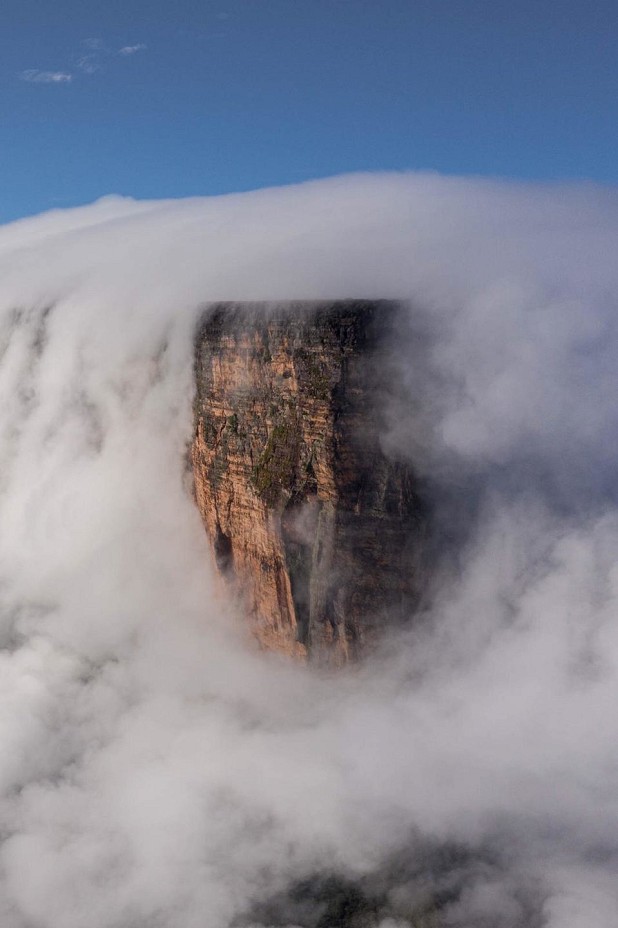
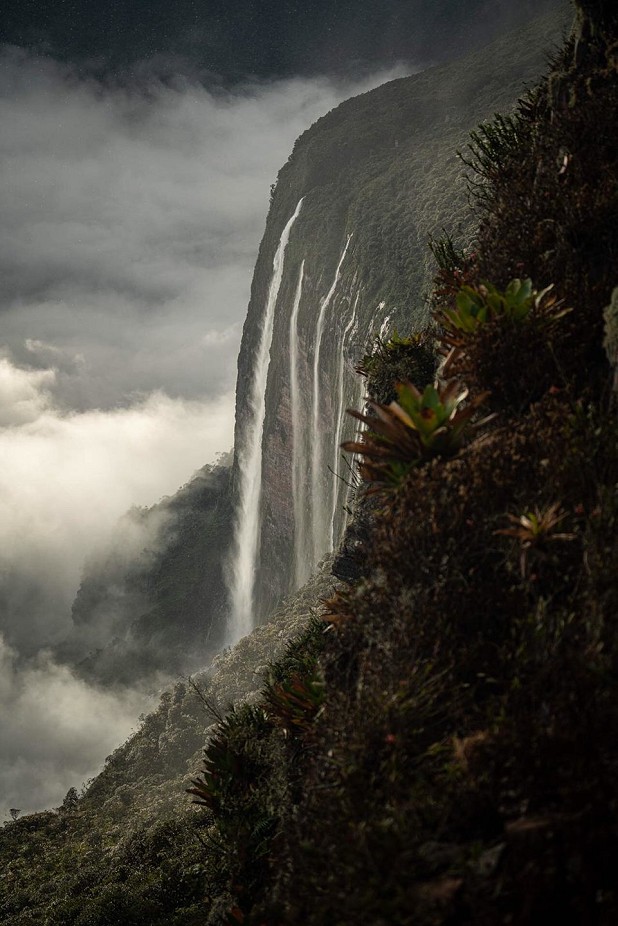
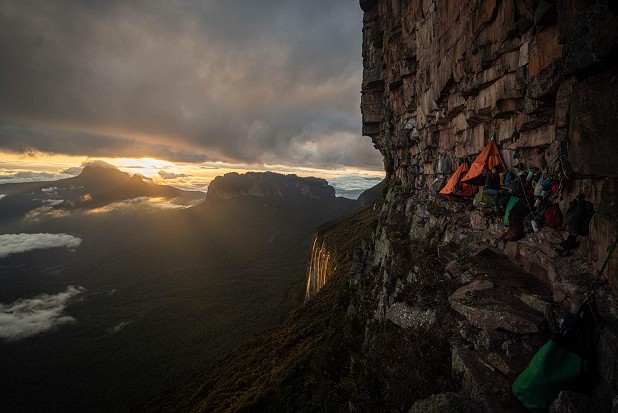
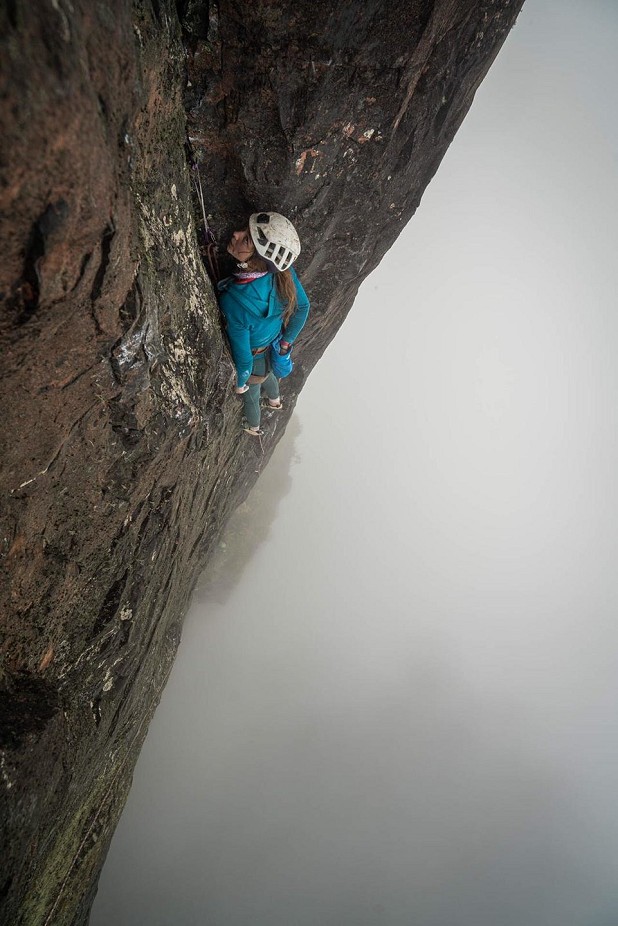
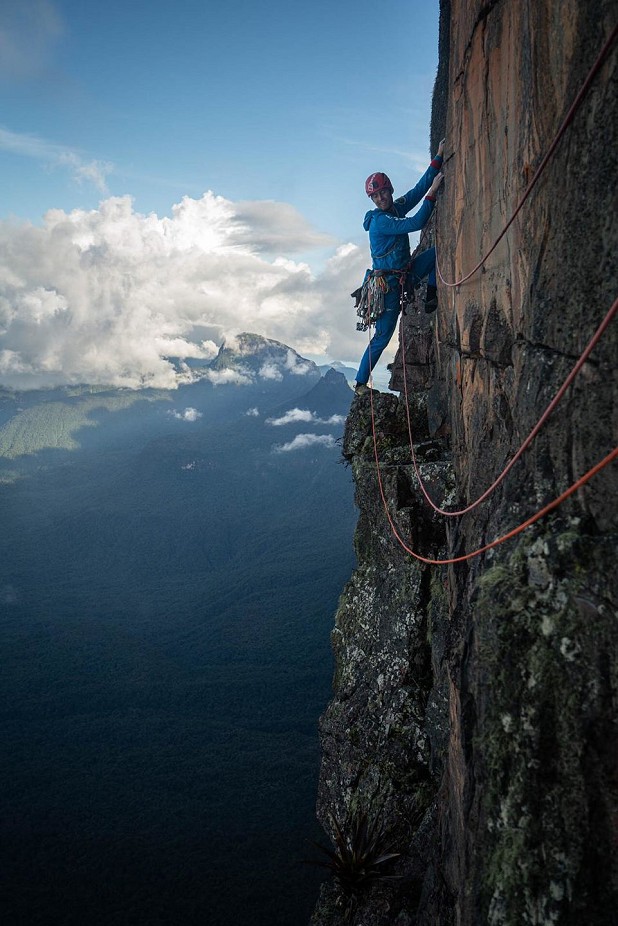
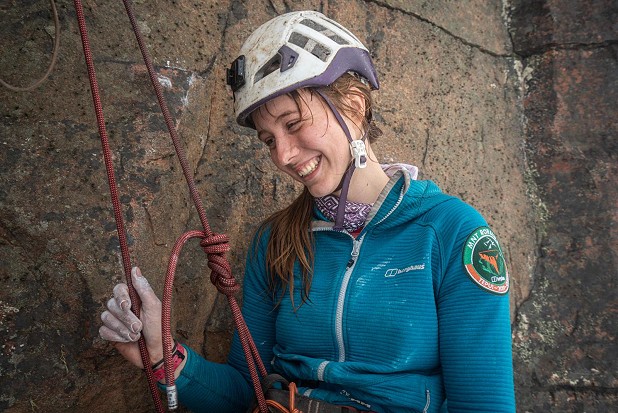
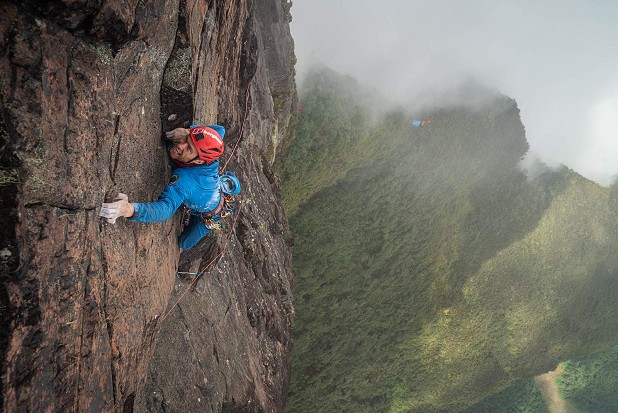


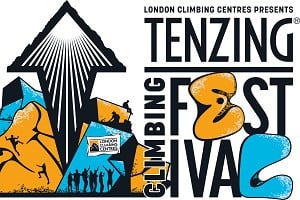
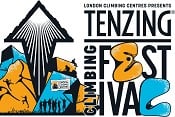
Comments
Not sure why the OP has attracted dislikes, as it sounds like a proper adventure!
My only disappointment, from the write-up, is that it was felt necessary to bolt-protect some of the climbing. Maybe I've just been lucky and found routes that could be done without, but I've always considered a large part of the tepui challenge as being to climb it UK-trad style (albeit with the acceptance of some bolted belay or hauling points). And yes, I do appreciate that lead-bolting can be considered a part of US-trad. Having said that, I'm aware of having clipped a bolt placed on an earlier attempt when we first climbed Autana, so the whole issue is clouded with grey areas!
I look forward to reading further updates, and good luck to the team in finding better rock. It's a world class objective.
I really does sound like a brilliant adventure, I'm just a little turned-off by the drip-drip publicity. Let me know when they've succeeded or failed and I'll be interested to know what happened.